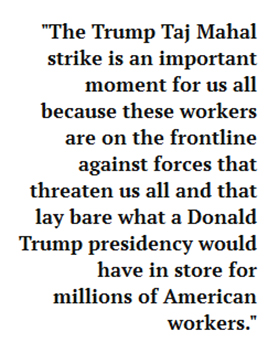You’re working away at your computer when suddenly, up comes an error message or worse, your computer comes to a screeching halt. Deciphering what computer problems you have and how to fix them can be difficult, especially if you don’t know as much as you’d like about your PC.

Blue Screen of Death (BSoD)
Many people think of blue as a calming color; however, when it comes up on your computer screen with a bunch of white text, it probably has the opposite effect. The blue screen of death (BSoD or STOP Error) may appear to be one of the scariest computer problems you’ll come across. However, all your computer may need is for you to reboot it.
As you likely have no ability to power down the way you would normally; hold down the power button on your computer for about 10 seconds until the computer turns off. There will be no mistaking this; the screen will go off and you will hear a little sound. Wait a little while and power back up. If you’re someone who likes to cross every “t” and dot every “i” unplug your computer and connected devices (like printers) once the computer is off. Wait about 5 minutes and power back up.
If you get the Blue Screen of Death again, repeat but wait longer before powering back up. If it happens a third time, it may be time to visit www.unionbuiltpc.com.
Applications That Won’t Install
If you’re having trouble with an application not installing, it may be because your computer doesn’t have enough hard drive space. If this is the case, you need to free up some space. This is one of the computer problems that’s, well, least problematic. You can free up some hard drive space by getting rid of files and folders you don’t need. These may be temporary files, duplicate files or data for software you’ve uninstalled.
You can also purchase an external hard drive and move the majority of your files and folders there.
Another option is to make a small investment in a secure cloud storage solution for storage of files and folders.
RELATED: Learn More About the Benefits of Secure Cloud Storage
Applications Run Slowly
There are several reasons software might be running at turtle speed. You may have computer problems that involve your operating system or an application, your operating system might be missing updates or your computer doesn’t have enough hard drive space. If you don’t have enough hard drive space, you can scan, clean and optimize your hard drive.
FREE DOWNLOAD: How to Optimize Your Slow Windows Computer
Abnormal Applications Behavior
Computer problems that involve applications acting strangely oftentimes leave you wondering what has happened. Your application has been working just fine, but now, seemingly without reason, it is doing something strange.
For instance, your Word document will no longer show the top margin of your document. It still says it’s there, and when you print it, there’s not a problem. You just can’t see it on your monitor. If this is happening, you may want to restart your computer. Conducting an internet search for the type of problem you’re experiencing or consulting Union Built PC may help you as well.
FOR THE ADVANCED USER: Missing DLL File
Dynamic-Link Library (DLL) files house information for your operating system on how to perform certain functions. Occasionally, your computer loses DLL files or something damages them. When your PC can’t read the particular DLL file, it doesn’t know how to respond in certain situations. You may have a missing or corrupt DLL file if you receive an error message every time you perform a certain function, such as saving. If your computer problems are stemming from missing and damaged DLL files, you can restore them by downloading them back onto your PC.
We hope these tips will help you solve some of your computing nightmares. Remember, Union Built PC is always here to help. Like us on Facebook, Follow us on Twitter and subscribe to the Union Built PC monthly eNewsletter for Union News and articles like this delivered straight to your inbox.





 Both Trump, who built the Taj Mahal, and Icahn, who is the current owner, have taken millions from the property, driven it into bankruptcy, and left the workers holding the bag. Icahn, as Trump Taj Mahal’s sole debtholder between 2010 and 2014, took $350 million out of the business. Icahn has a long history—going back nearly thirty years to his takeover of TWA airlines—of bleeding companies of assets, gutting pensions and benefits, and then tossing aside the firms’ hollowed out carcasses. Manipulation of employer-friendly bankruptcy laws has also been a Trump specialty, one that he has used on several occasions to stiff contractors, going back to when he was the original “too big to fail” scamster at the beginning of the 1990s. Combined, Trump and Icahn have used the bankruptcy tool at the Taj Mahal multiple times.
Both Trump, who built the Taj Mahal, and Icahn, who is the current owner, have taken millions from the property, driven it into bankruptcy, and left the workers holding the bag. Icahn, as Trump Taj Mahal’s sole debtholder between 2010 and 2014, took $350 million out of the business. Icahn has a long history—going back nearly thirty years to his takeover of TWA airlines—of bleeding companies of assets, gutting pensions and benefits, and then tossing aside the firms’ hollowed out carcasses. Manipulation of employer-friendly bankruptcy laws has also been a Trump specialty, one that he has used on several occasions to stiff contractors, going back to when he was the original “too big to fail” scamster at the beginning of the 1990s. Combined, Trump and Icahn have used the bankruptcy tool at the Taj Mahal multiple times.